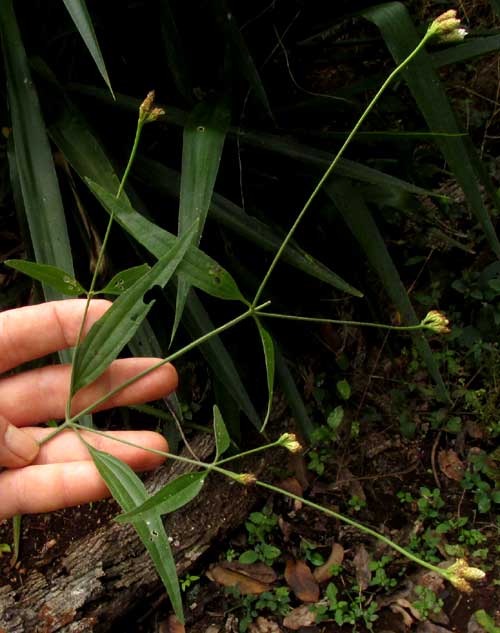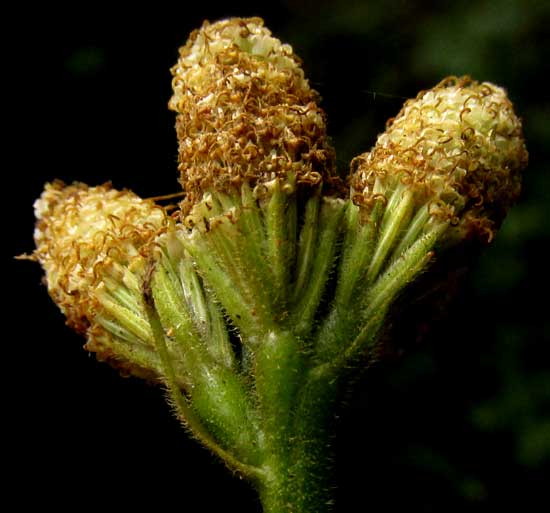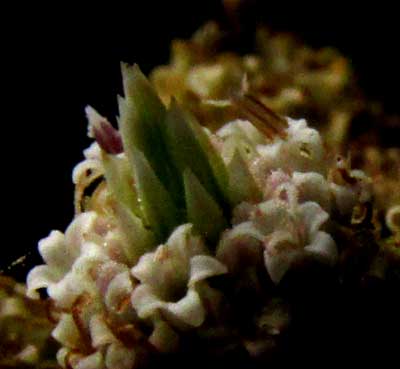Excerpts from Jim Conrad's
Naturalist Newsletter
from the February 11, 2018 Newsletter issued from Rancho Regenesis in the woods ±4kms west of Ek Balam Ruins; elevation ~40m (~130 ft), N20.876°, W88.170°; north-central Yucatán, MÉXICO
PEARLHEAD
Enmeshed among weeds overgrowing one of the rancho's fences, in a fairly shaded spot, was a head-high plant so spindly and leggy that it was hardly visible amid all the visual clutter. I'd not notice it until now, but now its small, white flowering heads caught my attention. Below, you can see a sprig removed from the weedy tangle

Notice that leaves arise opposite one another on the stiff, slender stems, and the leaves themselves are strongly three-nerved. The flowering heads reside at the tips of long, slender, stiff peduncles. A tip is shown close-up below:

There you see three flowers of the type produced in the big Composite or Sunflower Family, the Asteraceae. When we think of that family usually we visualize something like sunflowers or asters, where each flower is composed of two kinds of florets -- petal-like ray florets surrounding and "eye" composed of cylindrical disc florets tightly packed in the flower's center. Some composite flowers, however, such as those of dandelions and lettuce plants, only produce ray florets, while others, such as the eupatoriums and horseweed bear only disc florets. In the picture we see three flowers consisting only of disc florets. The narrow, green, sharply tipped items beneath each cluster of disc florets are bracts constituting the flowers' involucre.

Above we see the top of one of these clusters showing tiny, white, disc-floret corollas, each with five back-turned lobes. The Composite Family is so huge and diverse that for a solid identification often you need to break open a flower to see how things are constructed inside. This plant's interior anatomy is on display below:

Good field marks to notice are that the platform on which the disc florets arise, instead of being flat or somewhat convex, is tall and slender, or "columnar." The cypsela-type fruits are black at maturity, and the base of each floret is partly surrounded by a greenish, scoop-like bract called a palea.
With all these fine field marks it was easy enough to determine that our plant is ISOCARPHA OPPOSITIFOLIA, distributed from Texas south through Mexico and Central America to northern South America. Occurring in Texas, it's been bestowed with the English name Rio Grande Pearlhead. However, the Rio Grande lies at the extreme northern fringe of this widely distributed tropical American plant, so here we'll just call it Pearlhead.
Though any weed can be considered as a first responder working hard to save and bring back to life injured natural communities and mistreated soil, the only compliment I can find humans giving it is that it's attractive to certain pollinators.